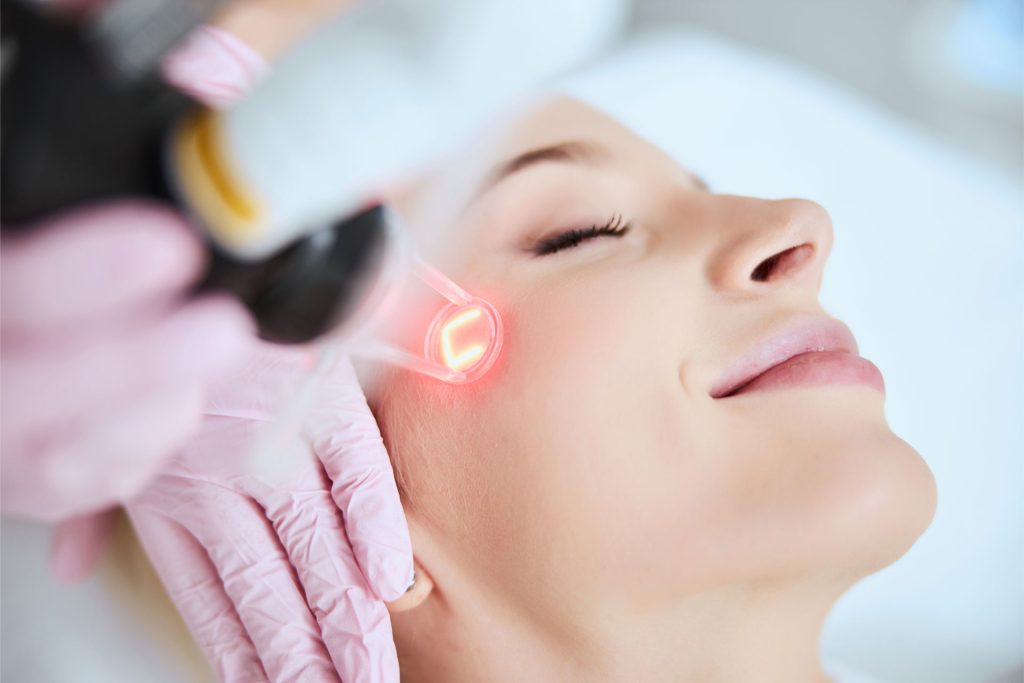Disclaimer: The following webinar contains sensitive content and was recorded during the COVID Pandemic. This may be triggering to some individuals. Please proceed at your own discretion.
Read Webinar Summary
Detailed Summary: CO2 Laser Facial Rejuvenation Results and Patient Outcomes
Immediate Post-Treatment Appearance and Recovery Timeline
CO2 laser resurfacing creates dramatic initial effects that can appear concerning but are completely normal. Patients typically look quite swollen and inflamed on day one post-procedure, which is expected and indicates proper treatment depth. By day seven, significant improvement is visible, and the dramatic transformation becomes apparent by 18 months post-treatment, with fine lines virtually eliminated.
Short to Medium-Term Results (3 weeks to 6 months)
3–4 Week Results: Even in fair-skinned patients who may experience more pronounced pinkness, textural changes in the cheek area become dramatically apparent. The overall facial contour and smoothness show significant enhancement, particularly when combined with complementary procedures like direct neck lifts.
6 Week to 3 Month Results: By six weeks, redness typically subsides considerably, and by three months, the depth of facial lines shows remarkable reduction. The CO2 laser effectively removes pigmentation issues, though patients must maintain sun protection, vitamin C, and potentially hydroquinone treatments to prevent pigment re-establishment.
Long-Term Outcomes and Durability
Texture and Pigment Improvements: The long-term results demonstrate dramatic texture smoothing and significant pigment reduction. These improvements are particularly striking when examining before-and-after comparisons, showing how much damaged pigment can be drawn out of the skin.
Age-Inclusive Benefits: Contrary to common assumptions, patients in their 80s can achieve remarkable results and derive significant emotional benefits from the procedure. Age should not be a limiting factor for healthy candidates, as the psychological impact of improved appearance remains important at any age.
Extended Follow-Up Results (1–2+ Years)
18-Month to Multi-Year Outcomes: Patients show sustained improvements well beyond the initial healing period. Examples include an 80-year-old patient at 18 months post-cheek volume enhancement and one year post-full face laser, demonstrating continued excellent texture improvement.
Exceptional Long-Term Cases: Some results exceed even experienced practitioners’ expectations, particularly in patients with severe baseline damage including deep furrows, hollows, and extensive creasing. The combination of cheek volume restoration and CO2 laser creates transformative results that cannot be achieved through any other single modality.
Comprehensive Facial Reshaping
Multi-Modal Approach: The most impressive results combine CO2 laser with strategic facial reshaping using injectable fillers. This approach can dramatically alter facial contours, such as correcting sunken cheeks and forward-sitting eyes, while simultaneously improving skin texture. The synergistic effect creates comprehensive facial rejuvenation.
Ultra Long-Term Durability: Remarkably, results can remain impressive even 13–14 years post-treatment. A patient photographed 14 years after facelift and 13 years after laser treatment at age 78 still maintained significantly improved cheek appearance and jawline definition from the original procedures.
Patient Satisfaction and Quality of Life Impact
The psychological benefits are substantial, with patients often sharing their results proudly on social media platforms. A representative case shows a patient two years post-treatment (including fillers, direct neck lift, and full face laser) who posted her own photos online, demonstrating both the physical transformation and the emotional confidence gained from the procedure.
Clinical Significance
CO2 laser resurfacing represents a unique technological opportunity in 2020 and beyond, offering transformative results that cannot be replicated by any other single treatment modality. The combination of immediate dramatic improvement, sustained long-term benefits, and significant quality of life enhancement makes it a valuable option for appropriate candidates across a wide age range.
CO2 Laser Skin Resurfacing
There are several procedures that may be used to rejuvenate the facial skin including chemical peels, dermabrasion and CO2 laser skin resurfacing. Based on nearly two decades of experience, Dr. Yellin’s technique of choice remains CO2 laser skin resurfacing to smooth and tighten facial skin. While this procedure is most commonly used to minimize the appearance of lines and wrinkles around the eyes, mouth, cheeks and forehead, it is also effective in treating precancerous sun damaged skin, acne scars, and uneven pigmentation.
The Procedure
CO2 laser skin resurfacing can be safely performed on those with Fitzpatrick skin types I-III (very fair to an olive complexion). Dr. Yellin uses local anesthesia for comfort and oral Xanax to relax the patient when performing this procedure in the office, which is appropriate if treating localized areas such as around the eyes, cheeks and/or mouth. If full face resurfacing is indicated, general anesthesia in an outpatient surgical center is required. Additionally, CO2 laser skin resurfacing can be performed in conjunction with other facial surgical procedures; most frequently around the eyes and mouth at the time of a facelift. However, in the interest of patient safety, Dr. Yellin does not perform laser resurfacing on the skin of the cheeks at the time as a facelift since the skin in this area has been surgically lifted and the blood supply somewhat compromised. To avoid an increased risk of poor skin healing, if the patient requires a face lift and full face CO2 laser skin resurfacing, the procedures will be staged, typically 3-6 months apart. The exception is the forehead, which can be lifted (except for a lateral brow lift, which is a subcutaneous procedure) and resurfaced at the same time, due to the robust nature of the blood supply and thickness of the soft tissues in this area.
During the procedure, the laser safely removes sun damaged skin layer by layer. The laser penetrates to a precise, controlled depth, reducing the risk of scarring or pigmentation problems. .
After the procedure, the skin sheds for about 7-10 days and will need to be protected with the provided medicated soak and covered with a non-petroleum grease to protect it. This is applied every 3 hours while awake. Once the skin has regrown, it appears pink or red for several weeks and is back to normal color in 4-12 months depending on the patients skin type. Those with brown hair and brown eyes, with skin that tans naturally typically return to a normal skin color the quickest, while those who are very fair skinned with blue eyes and blonde or red hair take longer for the skin’s pink hue to fade completely. Until the skin is no longer pink, the patient must be sun aware and diligently sun protective to avoid unwanted hyperpigmentation (browning of the skin). With healing, the outer layers of skin grow anew, collagen is stimulated which thickens the skin, and the skin is 3-dimensionally tightened producing smoother, lighter, brighter, and younger-looking facial skin. Thought eh skin will appear fully healed in a matter of months as described above, final collagen production and thus optimum results can take up to 18 months to occur. The improvement in the skin’s appearance can last for 15 years or more. For many, this technique is almost like a magic wand for sun damaged skin.
Before & After Photos
*All photos shown are patients of Dr. Yellin and are the property of Marietta Facial Plastic Surgery, Laser & Aesthetics Center. Individual results may vary. Please see full disclaimer.
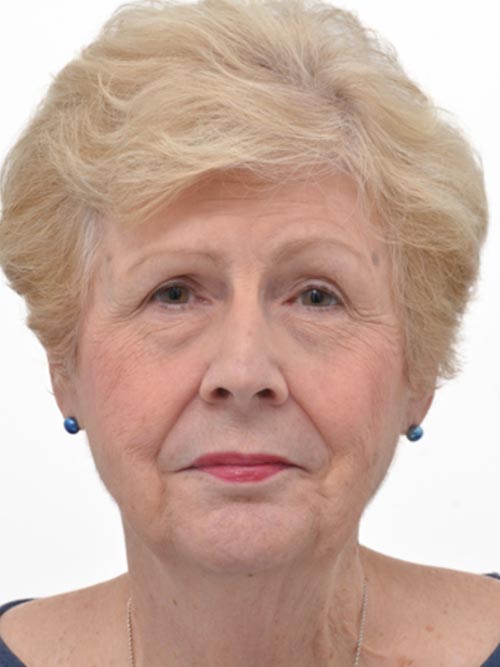

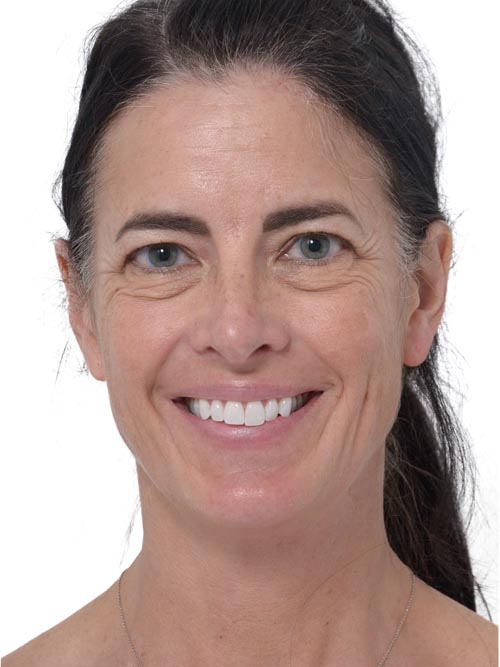
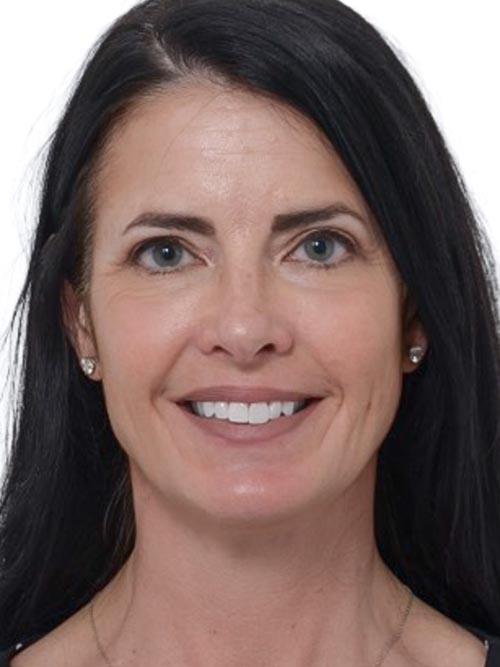
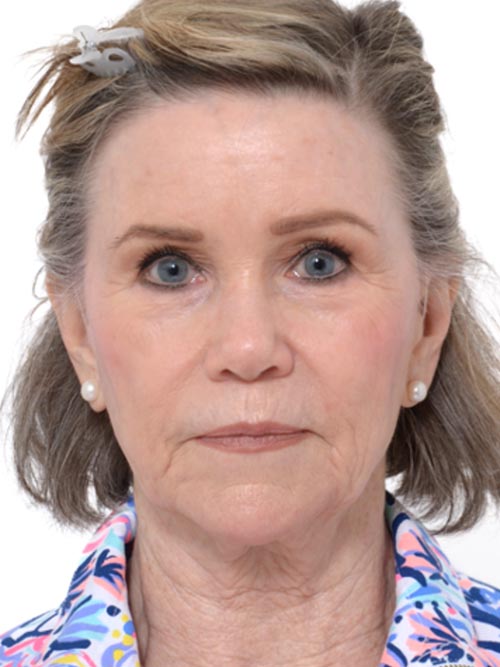
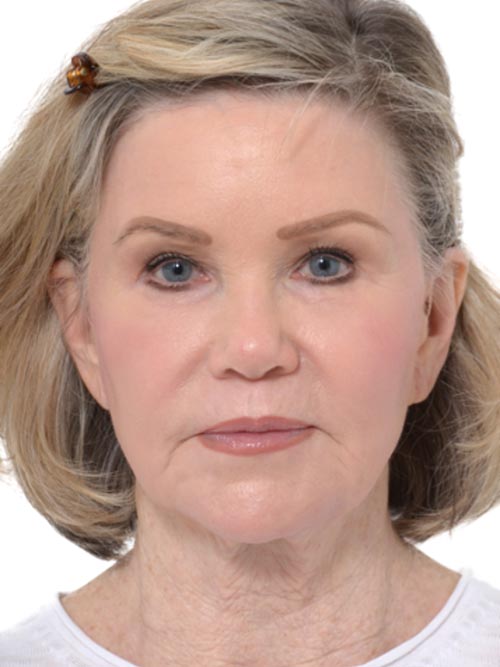
All photographs and other material presented on this website are the property of Dr. Yellin. Please do not download or reproduce the images without the express written consent of Dr. Yellin.
Disclaimer: Individual results may vary. No guarantee of results, stated or implied by any photo or statement on this website can be made. Please see full disclaimer.
Dedicated Care for Your CO2 Laser Skin Resurfacing Experience
At Marietta Facial Plastic Surgery, Laser & Aesthetics Center, we are committed to providing dedicated care throughout your CO2 Laser Skin Resurfacing journey. From your initial consultation to your post-treatment follow-ups, our experienced team ensures that you receive personalized attention and expert guidance every step of the way. We take the time to understand your unique skin concerns and aesthetic goals, allowing us to customize your treatment plan for optimal results. Utilizing the latest CO2 laser technology, we achieve remarkable skin rejuvenation that addresses fine lines, wrinkles, scars, and uneven texture with precision and minimal downtime. Our compassionate approach ensures a comfortable and smooth recovery, empowering you to embrace your revitalized, radiant complexion with confidence. Trust Marietta Facial Plastic Surgery, Laser & Aesthetics Center to enhance your natural beauty through advanced, tailored skin resurfacing solutions.
Atlanta & Marietta CO2 Laser Skin Resurfacing
Marietta Facial Plastic Surgery, Laser & Aesthetics Center is a premier destination for CO2 laser skin resurfacing. We are proud to serve patients from Atlanta, Marietta, Acworth, Woodstock, and the rest of the country. To schedule your consultation or to request more information, please fill out the form below or call us at (770) 425-7575.
FAQs
How effective is CO2 laser resurfacing compared with other skin-rejuvenation options?
CO2 resurfacing delivers some of the most dramatic, single-session improvements available without surgery. By vaporizing damaged epidermis and gently heating deeper dermal layers, it erases surface flaws and jump-starts robust collagen remodeling. Chemical peels and microneedling can brighten or refine texture, but they typically require multiple visits for comparable change. Patients who want noticeable wrinkle reduction, scar smoothing, and visible tightening often find the CO2 laser achieves their goals faster—provided they follow diligent after-care.
How does CO2 laser resurfacing differ from fractional lasers?
Traditional CO2 devices ablate the entire skin surface, whereas fractional CO2 creates microscopic columns of controlled injury surrounded by intact tissue. The fractional pattern accelerates re-epithelialization and reduces downtime, yet still stimulates deep collagen renewal. Most modern practices prefer fractional CO2 because it balances efficacy with safety, allowing energy levels to be customized for different skin types and concerns while minimizing prolonged redness or pigment shifts.
What skin concerns can CO2 laser resurfacing address?
The procedure can soften fine to moderate wrinkles, tighten mild laxity, fade sunspots, shrink enlarged pores, and smooth acne or surgical scars. By stripping away sun-damaged skin and activating collagen formation, it leaves the complexion brighter and silkier. Many patients notice more even pigmentation, fewer creases around the mouth and eyes, and diminished rough patches that once caught makeup.
Am I a good candidate for CO2 laser resurfacing?
Ideal candidates are in overall good health, have fair to medium skin tones, and show signs of photoaging or scarring they’d like to improve. They should be nonsmokers—or willing to pause—free of active skin infections or uncontrolled systemic conditions, and willing to follow strict after-care instructions. A consultation reviews skin type, medical history, and lifestyle to confirm suitability and tailor laser settings.
Does CO2 laser resurfacing work on darker skin tones?
Fractional CO2 can be performed on some darker Fitzpatrick types with conservative energy and pre-treatment pigment-suppressing creams, but the risk of post-inflammatory hyperpigmentation is higher. Individuals with very rich complexions are often steered toward alternatives such as radiofrequency microneedling or erbium YAG lasers, which still stimulate collagen but carry a lower pigmentary risk.
Is the CO2 laser resurfacing procedure painful?
A combination of topical anesthetic, targeted nerve blocks, and optional oral or IV sedation keeps discomfort manageable. Patients usually describe a hot, prickling feeling during laser pulses. Afterward the skin can feel sunburned and tight for a day or two. Cool compresses, thick healing ointments, and any prescribed pain relievers help ease residual soreness while the surface re-forms.
What happens during the CO2 laser resurfacing procedure?
On treatment day the skin is cleansed, photographed, and numbed with topical anesthetic; some patients receive small nerve blocks or light sedation. Protective eyewear or ocular shields are placed, and the surgeon makes controlled passes with the fractional CO2 handpiece across the targeted zones. Cool air or saline mist soothes warmth between passes. A hydrating ointment is applied immediately afterward, and detailed home-care instructions are reviewed.
What is the typical downtime for CO2 laser resurfacing?
Most patients experience about a week of visible healing. Redness, swelling, and light oozing peak during the first 48 hours. By day three, bronze crusts form and start flaking away. Mineral makeup is usually safe once fresh skin appears, often around day eight to ten. Pinkness can linger several weeks yet is easily concealed. Social activities generally resume after peeling subsides.
How soon will I see visible improvement from my CO2 laser resurfacing treatment?
Brightness and surface smoothness emerge as soon as flaking ends, but collagen remodeling continues for months. Lines gradually soften and skin feels firmer over three to six months, with peak refinement often noted around the fourth month. Because collagen builds progressively, many people notice their complexion looking subtly better each passing week.
How many CO2 laser resurfacing treatments are usually recommended?
Many individuals achieve desired results with one well-planned fractional CO2 session. Those with extensive sun damage or deeper acne scarring may opt for a second pass spaced six to twelve months later, after full recovery. Your surgeon weighs goals, safety, and personal downtime tolerance to decide whether a single energetic pass or staged treatments best suit you.
What are the potential risks and side effects of CO2 laser resurfacing?
Temporary redness, swelling, oozing, and itching are common. Less frequent issues include prolonged erythema, infection, milia, acne flares, pigment shifts, and—rarely—scarring. Using antiviral prophylaxis when indicated, following strict cleansing protocols, avoiding sun exposure, and selecting an experienced facial plastic surgeon greatly decrease complication rates and foster even, predictable healing.
How do I care for my skin after CO2 laser resurfacing?
Cleanse gently with a surgeon-approved wash, then apply cool saline soaks and a thick occlusive ointment every few hours to keep the surface moist. Avoid touching or picking flakes. Sleep with your head elevated, use hypoallergenic pillowcases, and pause retinoids or exfoliants until cleared. Introduce broad-spectrum SPF 30+ once fresh epithelium forms and stay vigilant about sun protection.
Will CO2 resurfacing help tighten mildly sagging skin?
The laser’s thermal energy contracts existing collagen and prompts new fiber formation, providing modest tightening—especially around the eyes and mouth. While it can lift mild jowls and crepey lids, it cannot match the dramatic lift of a surgical facelift or neck lift. Patients seeking more pronounced elevation often pair resurfacing with eyelid surgery, mini-lifts, or thread lifts.
Can CO2 laser resurfacing treat acne scars?
Yes. Fractional CO2 is widely regarded as a gold-standard option for atrophic acne scars such as boxcar and ice-pick depressions. By vaporizing scar tissue within micro-columns and stimulating collagen synthesis, the laser gradually levels pitted areas. Many people see meaningful smoothing after one treatment, with further refinement continuing over subsequent months.
How should I prepare before my CO2 laser resurfacing appointment?
Avoid tanning, self-tanners, and photosensitizing medications for at least two weeks. Discontinue retinoids about seven days before treatment unless advised otherwise. Your provider may prescribe a bleaching cream or antiviral medication. Arrange transportation, stock gentle cleanser and healing ointments, and set up a clean recovery area with fresh linens and soft foods for the first few days.
What results can I realistically expect from CO2 laser resurfacing?
Most patients notice visibly smoother texture, smaller-appearing pores, reduced fine lines, and more even pigmentation, creating an overall fresher look. Acne or surgical scars typically appear shallower and less conspicuous. While the procedure dramatically reverses accumulated damage, continuing healthy habits—sun protection, quality skincare, and avoiding smoking—helps maintain the refreshed appearance long-term.
Is CO2 laser resurfacing better than deep chemical peels?
Deep phenol or high-strength TCA peels can reach similar depths but are less precise and carry higher risks of unpredictable pigment changes. The CO2 laser permits controlled, layer-by-layer ablation with simultaneous coagulation, yielding reliable tightening and rejuvenation. Superficial peels shine for quick brightening with minimal downtime, whereas CO2 targets deeper wrinkles and scarring in a single comprehensive session.
Can CO2 laser resurfacing be combined with other aesthetic treatments?
Absolutely. Many patients schedule fillers or neuromodulators after healing to restore volume and relax dynamic lines, creating full-circle rejuvenation. Others pair CO2 resurfacing with blepharoplasty, fat transfer, or submental liposuction during the same session. Thoughtful sequencing—laser first, injectables later—ensures optimal recovery and harmonized results. Your surgeon will design a coordinated plan suited to your goals.
Can CO2 laser resurfacing be used on areas other than the face?
Yes. While the face is most common, fractional CO2 can also treat the neck, chest, and hands to improve sun damage, crepey skin, and textural irregularities. These regions require conservative settings because their skin heals differently than facial tissue. Your surgeon will discuss suitability, expected downtime, and any special after-care measures for each area you wish to address.
Is CO2 laser resurfacing safe to perform around the eyes?
When performed by an experienced facial plastic surgeon, fractional CO2 can safely rejuvenate crepey eyelid skin and crow’s-feet. Sterile metallic ocular shields protect the eyes beneath the lids, and energy settings are adjusted for the area’s delicate tissue. This cautious approach smooths fine lines and early hooding while minimizing swelling or pigment change. Diligent after-care and sun protection support predictable healing.

